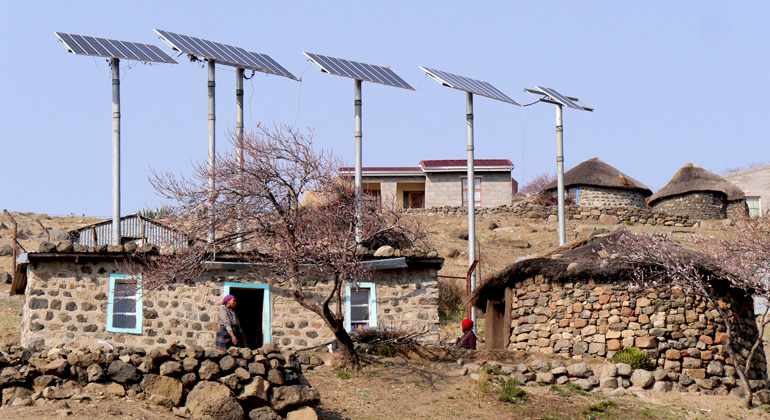Beyond the African power grid
In sub-Saharan Africa, a region rich in natural energy resources, there are an estimated 600 million people who currently do not have access to electricity. However, the rise of microgrids and advances in technology could be the answer to the region’s power woes.
According to market research company, BMI Research, 70% of Africans with access to electricity live in urban areas, while 28% reside in rural locations.
To date, the dominant approach to electricity access in Africa has been through large-scale grid rollout programmes. For those living in rural areas – often with no grid nearby – this approach cannot be the primary answer to electricity provision. Africa’s rural population is increasingly turning toward alternative off-grid solutions for their energy needs.
Fortunately, advances in technology are rapidly changing the options available beyond the grid. Falling solar technology costs and evolving battery storage technology have spurred the growth of micro-grid and standalone household systems.
Solutions beyond the power grid
Microgrids typically run off of solar, hydro, biomass, diesel , or a combination of these to reduce costs and increase availability. They connect multiple households and businesses to provide grid-quality electricity with 24-hour availability and high capacity.
However, these microgrid systems are often constrained by cost, making it difficult to find a scalable model.
The private sector is also seizing these developments as a major market opportunity for off-grid power generation and distribution.
Some microgrid companies have achieved success with solar, hydro and biomass generation systems.
However, other such companies are now opting to pilot systems with smart metering, remote monitoring and mobile payment capabilities. The latter could make scaling up easier.
Associated challenges and best practice
Besides scaling up, microgrid systems face other challenges such as implementation.
Despite their technical and operational similarity to the central grid, microgrids are typically not fully included in a country’s regulatory framework.
This makes rolling out microgrid systems challenging due to uncertainty around equipment standards, the ability to charge cost-reflective tariffs and the implications of the central grid reaching an area served by a microgrid.
As a result, private sector involvement remains limited and many microgrids have been government or donor-led and rely on a form of subsidy.
In Africa, Mali has had more success than any other African country in the development of isolated microgrids, with more than 200 diesel microgrids in operation. Increasingly, these diesel installations are being supplemented with renewable technologies to create hybrid microgrids.
On the other hand, standalone household system growth is being driven by scalable business models that meet household needs rather than the slower-moving progress of centralised national energy policies.
Standalone household systems provide first tier energy access for an increasing number of people across the continent.
Simplifying access
Companies like Mobisol and M-Kopa are pioneering this space bringing renewable energy to people beyond the grid.
Their smart solar power solutions are big enough to run refrigerators and other household appliances, while also powering LED light bulbs and charging laptops and cell phones.
These companies have also been at the forefront of innovative ‘pay-as-you-go’ payment solutions, using systems such as M-PESA and Airtel MTN. But, standalone home systems are not the panacea.
For higher energy consuming customers beyond the reach of the main grid, microgrids would provide a more feasible full electrification solution.
For microgrids to be successful, factors such as rural population density, affordability, an anchor customer (such as mining companies in the case of the DRC) and a sustainable revenue/financing model are all important considerations. Equally important is that there is clarity at the level of national energy policies about the role that microgrids can play.
Just as access to reliable and affordable independent telecommunications systems allowed Africa to leapfrog state run, expensive and unreliable landline infrastructure, beyond the grid energy solutions will enable Africans to leapfrog antiquated, central energy grid infrastructure and be at the forefront in accelerating innovative off-grid energy technology.








